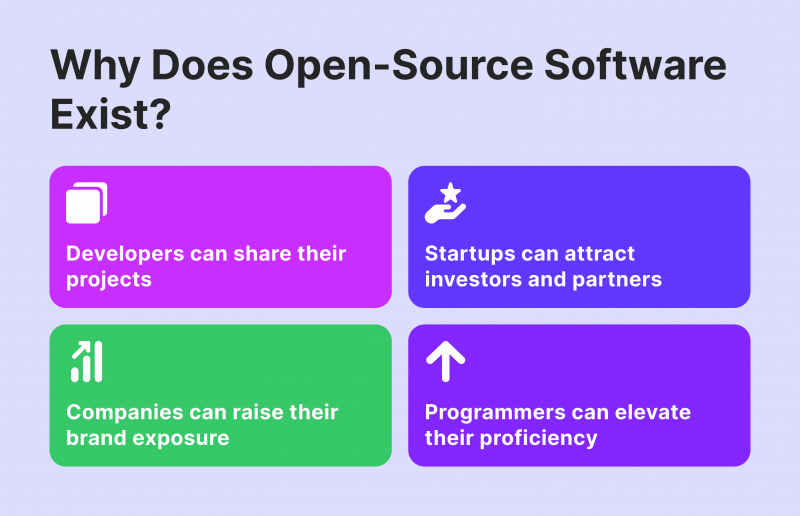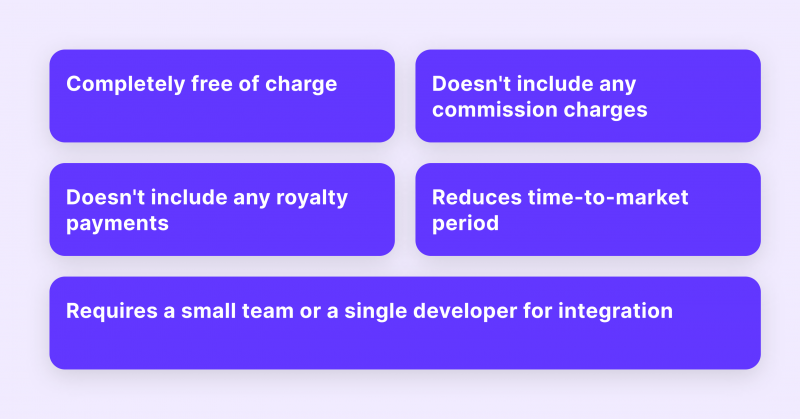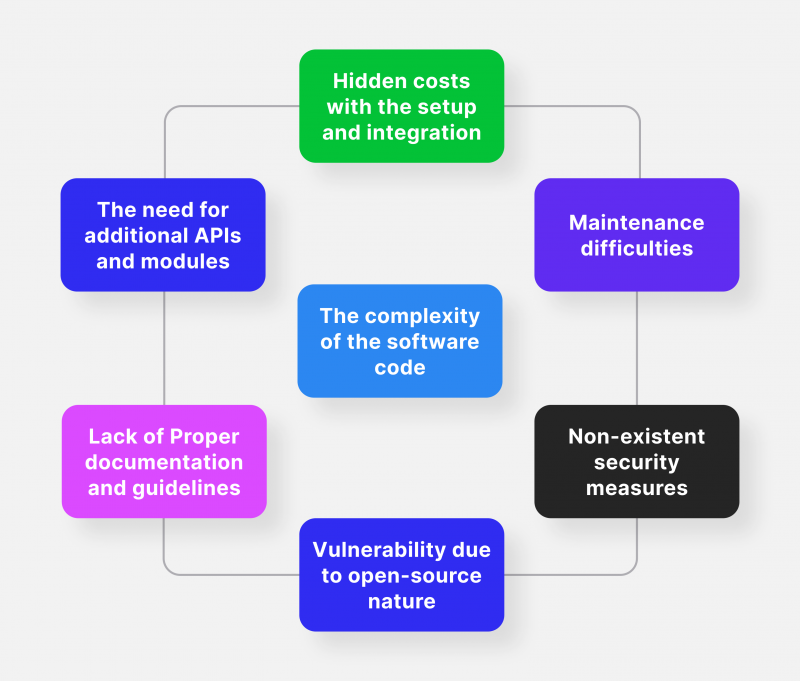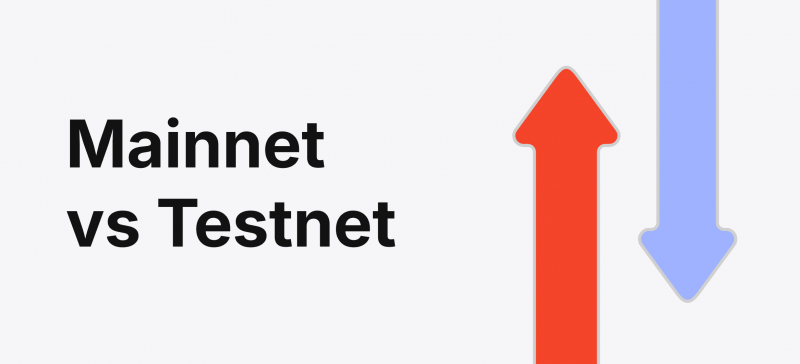The payment processing industry has grown tremendously in the 2020s, cultivating a fresh market of non-blockchain companies adopting crypto payment solutions. As a result, the globalisation of crypto as a fiat alternative has been accelerated exponentially, with over 500 million crypto owners ready to spend their virtual currencies on various purchases.
It is no secret that accepting crypto payments is a viable strategy to increase potential revenue streams in 2024. But which mechanism is the optimal one for your payment processing needs? This piece will answer this crucial question by analysing open-source payment gateway and pinpointing its pros and cons.
Key Takeaways
- Crypto payment gateways have become globally popular due to the rise of worldwide purchasing activities with crypto.
- There are three main gateway options available – in-house solutions, white-label software and open-source alternatives.
- Open-source solutions are completely free on paper and can decrease time-to-market periods for businesses.
- However, open-source software is often complex and devoid of security features and proper documentation.
Why are Crypto Payment Gateways Important?
The online payments industry has grown exponentially across the globe, with e-Commerce businesses taking the retail industry by storm. Today, most products and services can be bought and sold online, and crypto payments are gaining the lion’s share of this digital market each year. As of 2024, over 15,000 major businesses have adopted crypto as a legitimate payment option.
However, to integrate crypto transaction processing capabilities, businesses need to acquire their own payment gateway. There are three distinct options for businesses: developing their own payment processing system from scratch, partnering with a payment gateway provider, or using open-source payment software.

In-house options are mostly suitable for larger companies that already possess enough resources and a dedicated programming department to achieve this goal.
Considering the proportional benefits, this undertaking might be too costly for average companies. White-label payment gateways provided by third parties are a much cheaper option, but they have distinct limitations related to the diversity of currency choices and how fast you can process payments. However, third-party gateway providers charge affordable gateway fees and can quickly satisfy smaller companies.
The third option, open-source gateways, combines some of the benefits of both mechanisms above. However, it also inherits many of the corresponding issues. Let’s discuss.
What is an Open-Source Crypto Payment Gateway?
An open-source gateway is an entirely free crypto payment gateway available online. This software is free of charge and can be accessed by anyone with a stable internet connection and fundamental knowledge of a crypto payment gateway API.

It is possible to download and integrate open-source gateways into your infrastructure without paying royalties to the software’s creators. Now, you might wonder why open-source gateways exist in the first place. After all, properly crafted gateways are a huge commodity in online commerce, and why would anyone give them away for free?
The answer is simple enough—the developer community often releases open-source projects to attract partnerships and possible investors while sharing digital products with anyone on the Internet.
However, the quality of open-source software can vary wildly, and payment gateways are no different. So, let’s discuss some of the advantages and drawbacks you can expect if you consider an open-source approach to your gateway integration.
The Advantages of Open-Source Gateways
Despite their uneven quality, open-source gateways reliably feature lower upfront costs and can potentially accelerate your time-to-market period. Here’s what you can expect.

Smaller Fees and Operational Costs
As mentioned above, open-source gateways are entirely free of any charges, including the commission fees payable to any third parties. Open-source creators do not charge money in any format since the idea is to share the technology for free.
So, on paper, adopting open-source gateways can be the cheapest option for bootstrapped startups struggling to accumulate substantial capital. While open-source software requires technical adjustments and programming experts to integrate successfully, it doesn’t need a dedicated IT department. In many cases, a single or couple of developers can be sufficient to address all necessary modifications.
Faster Time-to-Market
Since most of the software is ready to go and only needs adjustments for launch, open-source gateways can be swiftly prepared to enter the market. Naturally, finalising the open-source modifications depends on the experience of your technical experts and the complexity of your specific IT infrastructure. However, on average, open-source gateways take much less time.
In specific cases, the best open-source payment gateway might not even need any substantial modifications to be launched. In such optimal conditions, open-source software might be the most suitable solution for up-and-coming startups that must compensate for their lack of size through creativity and extra effort.
The history of open-source software goes back to 1953. However, the first meaningful open-source project movement started in the early 2000s, with the emergence of the globally available internet.
Theory Vs. Actuality: The Drawbacks of Open Source Gateways
Despite the benefits analysed above, open-source gateway solutions rarely work as intended. Unfortunately, open-source solutions are susceptible to various payment processing issues and technical limitations.
As a result, these tools can lead to bloated expenses, numerous operational errors and underwhelming performance. Let’s discuss.

Hidden Costs and Maintenance Difficulties
While open-source software doesn’t include direct costs, the version you acquire might be limited in capabilities. For example, an open-source solution might not be a self-hosted crypto payment gateway. As a result, you will require third-party payment gateway services to complete your open-source infrastructure, which defeats the entire purpose of using the free version.
Additionally, open-source programs can often be buggy and experience technical issues after launch. These bugs and glitches will not only increase routine maintenance costs but decrease service quality, leaving customers disappointed with processing times and frustrated with payment delays or cancellations.
Programming Complexity and Lack of Documentation
Most open-source solutions are built by a crypto payment gateway development company of some type as an experiment to try out new technologies. Since the nature of open-source software is often experimental, their core programming structure might be highly complex for junior or mid-level developers.
So, you might experience significant difficulties in the code adjustment and integration process. Eventually, you might even need to hire more skilled and experienced developers to sort everything out, which will lead to even more expenses.
The lack of official documentation can confound this issue since your developers will not have guidelines to follow, making the entire integration and setup process more challenging.
Security Concerns
Open-source solutions often come in the form of a crypto payment gateway GitHub software. This means that the solution is simply uploaded to the GitHub repository and is available for everyone to study.
While freedom of choice is excellent, it raises security concerns since anyone can study the code and identify weaknesses and breach points. So, when considering an open-source solution, you must spend extra money on additional cybersecurity tools and practices.
Final Thoughts – Which Crypto Payment Gateway Solution is Best for You?
While open-source solutions are prominently featured in the latest payment industry news, they are quite controversial for the above reasons. The lack of standardisation, confounded technical complexity, and security measures are huge problems, especially in the financial services industry, where users entrust their accounts to companies.
So, even though open-source gateway solutions are by far the cheapest options on the market, they have numerous shortcomings that could ultimately make them the most expensive payment processing mechanism.
Due to that fact, it is advisable to spend more on a white-label crypto payment gateway. While this option is considerably more expensive initially, the spared costs of security, maintenance and technical support will offset or even outweigh the savings you can make with open-source software.











